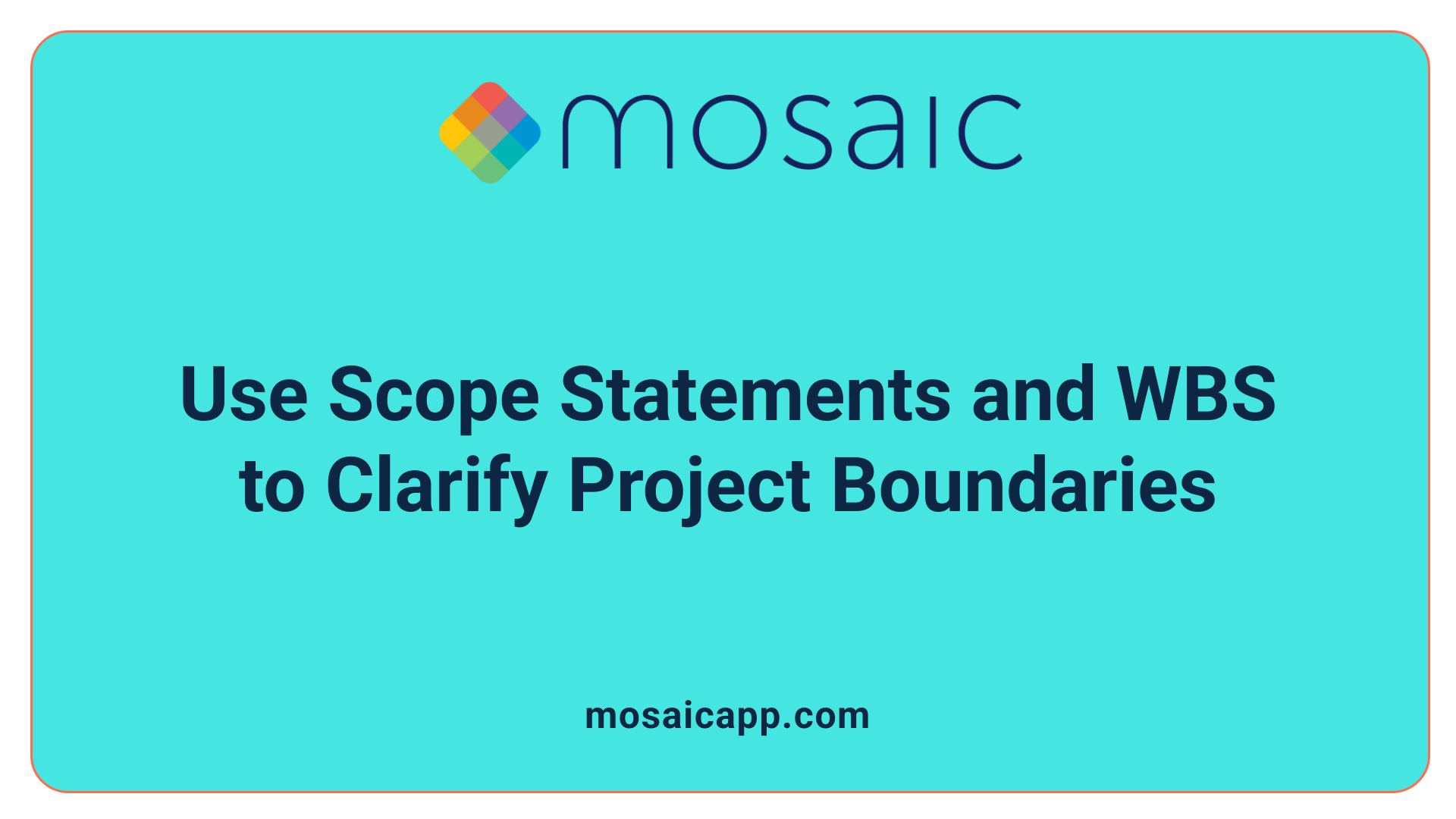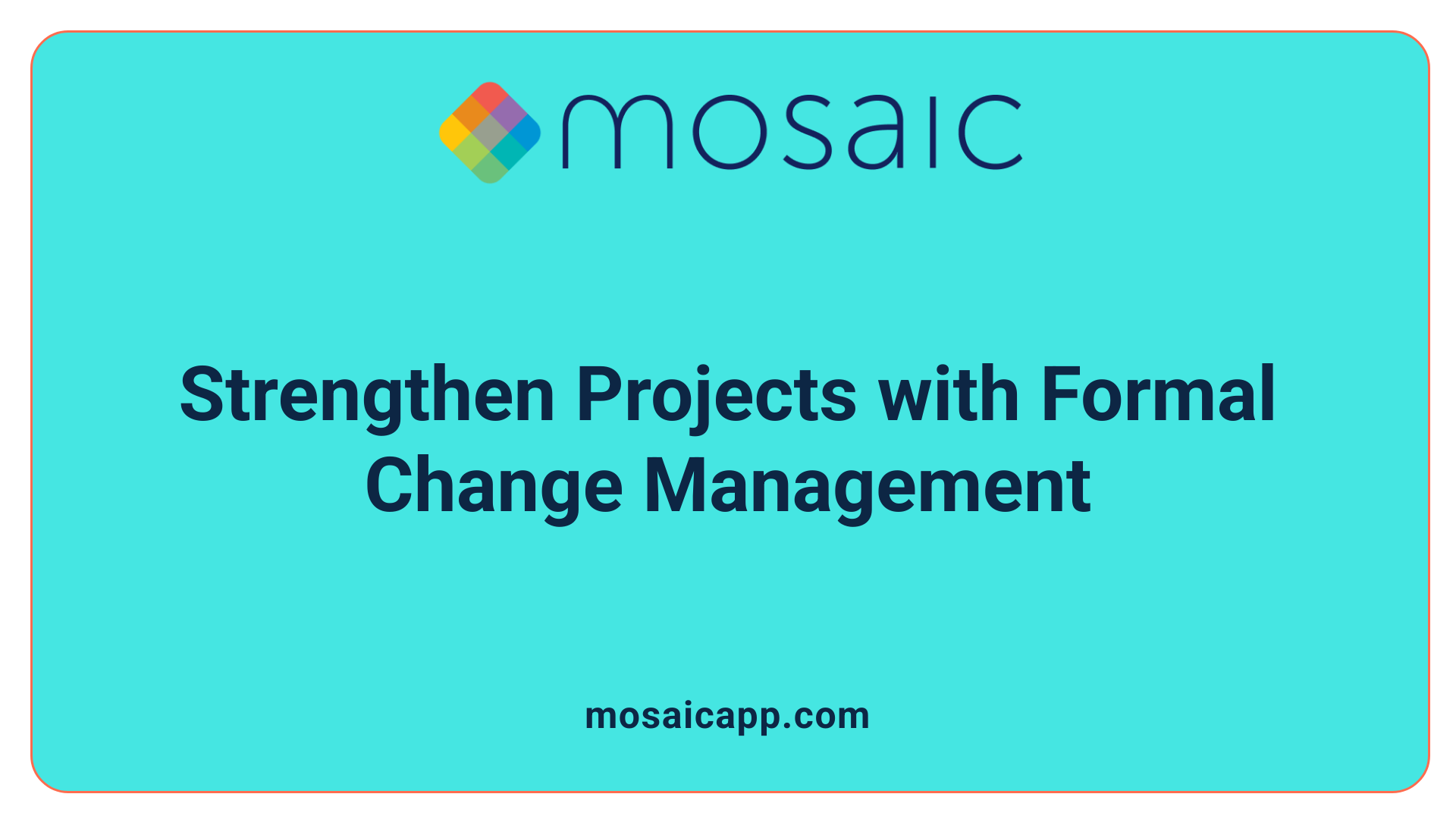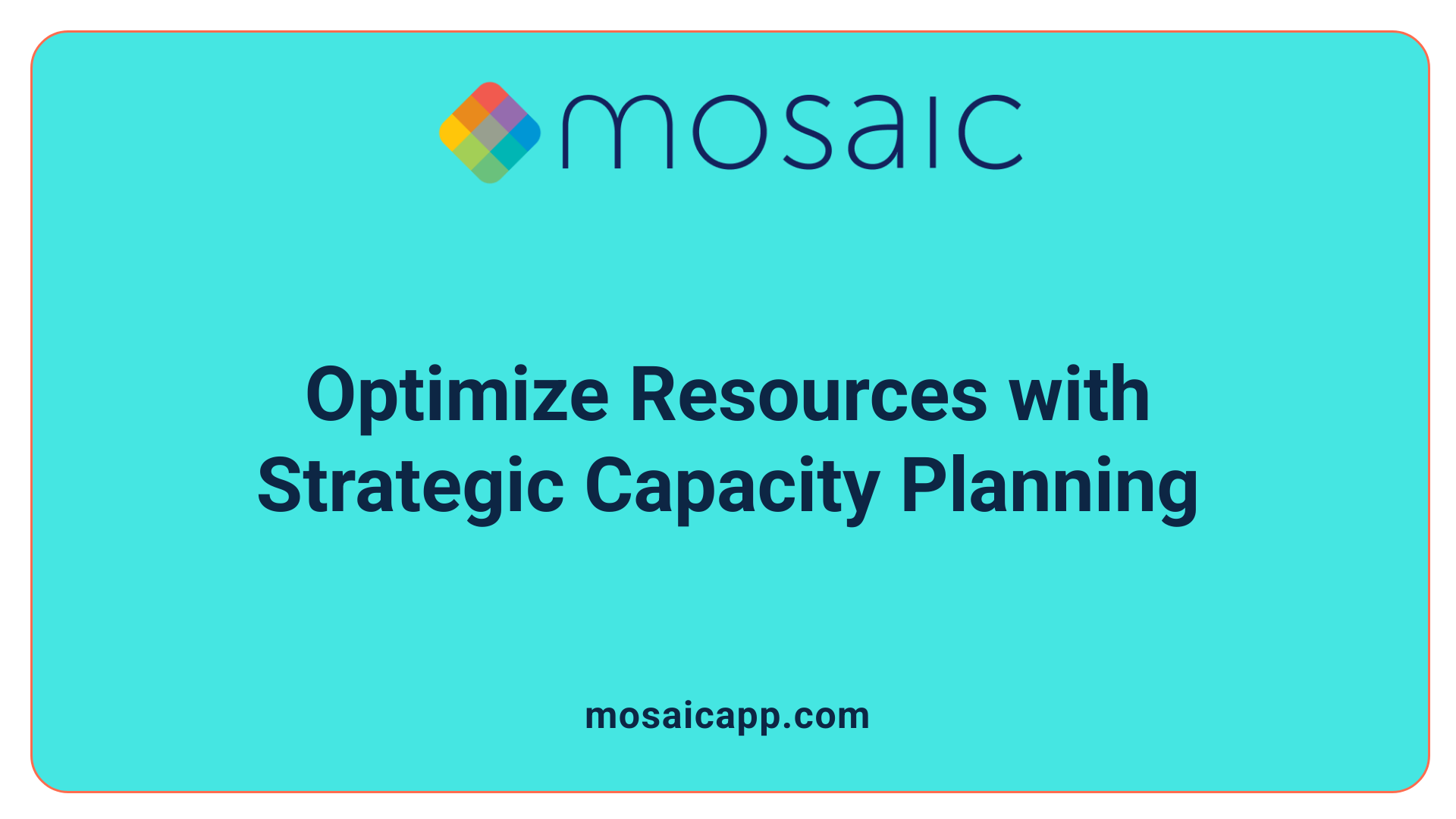Introduction to Smarter Project Planning
Effective project planning is the cornerstone of delivering projects on time and within budget. By adopting smarter planning strategies, organizations can significantly reduce the risks associated with scope creep and cost overruns. This article explores the critical components of effective planning and showcases how these practices foster project success across various industries.
The Foundation of Clear Scope Definition

What is the importance of defining and documenting the project scope?
Clearly defining and documenting the project scope is essential for setting precise objectives, deliverables, timelines, and constraints. This clarity helps ensure that all stakeholders have a shared understanding of what the project aims to achieve and what limits are in place. Proper documentation includes scope statements, work breakdown structures (WBS), and detailed descriptions of deliverables, which act as a reference point throughout the project.
Having a detailed scope document acts as a safeguard against unplanned changes that can lead to scope creep. It provides a baseline against which all requests for scope modifications can be evaluated. When the scope is well-defined from the beginning, it becomes easier to identify deviations early, making it less likely for uncontrolled expansions to occur.
How does scope clarity benefit project management?
Clarity in scope directly contributes to better planning, resource allocation, and risk management. It enhances communication between stakeholders, which reduces misunderstandings and conflicting expectations.
When project scope is clear, project managers can create realistic schedules and budgets, forecast resources accurately, and set achievable goals. This transparency minimizes the chances of scope creep, ultimately helping keep the project on track regarding time and costs.
Role of scope statements and work breakdown structures (WBS)
Scope statements provide a high-level overview of deliverables, objectives, and limitations, serving as a shared agreement among stakeholders. Work breakdown structures (WBS), on the other hand, decompose the entire scope into smaller, manageable components. This hierarchical breakdown clarifies the scope, assigns responsibilities, and provides a framework for monitoring progress.
Utilizing WBS encourages a systematic approach to project planning and control. Changes can be better evaluated at each level, and scope creep can be detected promptly. Both tools are crucial for maintaining discipline throughout the project lifecycle.
How can proactive planning prevent scope creep and cost overruns in projects?
Proactive planning prevents scope creep and cost overruns by clearly defining and documenting the project scope upfront, including setting a comprehensive scope statement and work breakdown structure (WBS). It involves early identification of potential risks, uncertainties, and stakeholder requests through horizon scanning and risk management, allowing teams to address issues before they escalate. Implementing structured change control processes ensures that any modifications are evaluated for their impact on schedule and budget, preventing unapproved scope expansion. Utilizing project management tools like Gantt charts and dashboards enhances scope tracking and early detection of deviations. Overall, proactive management establishes a controlled environment where scope and costs are continuously monitored and managed, reducing the likelihood of overruns caused by uncontrolled scope changes.
More about defining project scope to prevent scope creep
Researching best practices such as creating comprehensive scope statements, engaging stakeholders early, and adopting robust change control procedures can significantly mitigate the risk of scope creep. Regular review sessions and the use of project management software facilitate ongoing scope validation and control.
Implementing Robust Change Control Processes

What strategies and best practices can be employed to manage project scope to avoid budget issues?
Effective scope management begins with the careful planning and documentation of the project's objectives, deliverables, and specific boundaries. Developing a detailed scope statement and utilizing a Work Breakdown Structure (WBS) helps clarify what is included and what is not, providing a clear reference throughout the project.
Engaging stakeholders early and maintaining continuous communication ensures everyone shares a common understanding of the project scope, reducing misunderstandings and conflicting expectations that can lead to scope creep.
One of the most critical practices is implementing formal change control processes. These procedures establish structured methods for submitting, reviewing, and approving scope change requests. Each request is thoroughly assessed to understand its impact on schedule, costs, and resources before approval. This prevents unregulated changes from inflating budgets or causing delays.
Documentation plays a vital role. Every approved scope change should be recorded, detailing the nature of the change, the rationale, and its expected effects on project scope, timeline, and costs. This documentation acts as a safeguard, ensuring transparency and accountability.
Regular monitoring of scope performance against the established baseline is essential. Tools like automated alerts and project management software facilitate early detection of deviations, allowing project teams to take timely corrective actions.
Integrating scope management with other project management areas—such as risk management, schedule, and resource planning—fosters a coherent approach that contributes to staying within budget.
Finally, continuously applying lessons learned and refining processes throughout the project lifecycle helps enhance scope control measures. Consistent application of these practices ensures that scope changes are managed effectively, keeping projects on track financially and operationally.
The Role of Capacity Planning in Resource Optimization

How do capacity planning and project management techniques help prevent scope and cost issues?
Capacity planning is a crucial element in managing project scope and controlling costs. It involves evaluating the team’s current capabilities and resource availability to ensure that there are enough skilled personnel and materials to meet project demands.
By forecasting future project needs, organizations can identify potential resource gaps before they cause delays or additional expenses. Strategies such as lead, lag, and match are essential tools in this process. Lead strategy involves acquiring resources in advance of their need to prevent bottlenecks. Lag means delaying resource procurement until it is absolutely necessary, avoiding over-commitment. Matching involves aligning resource availability exactly with project requirements, ensuring efficient utilization.
Using modern project management tools enhances these efforts. Scheduling software, risk assessment, and scope control mechanisms enable continuous monitoring of project progress. These tools help enforce project boundaries by tracking scope changes, schedules, and budgets.
Effective capacity planning allows project managers to set realistic timelines and allocate resources efficiently. When resource levels are aligned with project scope, organizations can avoid unnecessary expenses, prevent scope creep, and adhere to budgets.
Furthermore, scenario planning and strategic resource management prepare teams for potential fluctuations in scope or unforeseen challenges. Regular reviews and adjustments keep the project on track, reducing the risk of scope and cost overruns.
In summary, capacity planning and project management techniques, when combined, create a proactive environment that minimizes scope creep and controls project costs. They promote optimal resource utilization, enable early detection of issues, and ensure that project deliverables are achieved within established constraints.
Strategies for Effective Planning in Different Industries

How does customizing planning approaches for construction, IT, and manufacturing benefit project success?
Different industries have unique challenges and requirements, so tailoring planning strategies is essential for managing projects effectively. In construction, this includes detailed site assessments, precise cost estimation, and phased scheduling to accommodate weather and logistics. For IT projects, flexible planning that allows for agile adaptations addresses rapid technological changes and evolving requirements. Manufacturing projects benefit from lean planning methods that focus on process optimization and resource efficiency.
By customizing approaches, teams can better allocate resources, anticipate industry-specific risks, and streamline workflows. This reduces delays, controls costs, and improves quality, making projects more resilient to scope creep and unforeseen hurdles.
Why is stakeholder involvement and thorough documentation important?
Engaging stakeholders early ensures their expectations are aligned with project objectives. Clear communication helps prevent misunderstandings that lead to scope creep. Documenting decisions, scope details, requirements, and changes provides a reference point for accountability and smooth change management.
Well-maintained records foster transparency and keep everyone on the same page, enabling quick resolution of disputes and revisions. Proper stakeholder involvement also enhances buy-in, increasing the likelihood of project success.
What are the advantages of phased project implementation?
Breaking projects into manageable phases allows teams to focus on specific deliverables, verify progress, and make adjustments early. This approach minimizes risk, ensures stakeholder feedback is incorporated in each stage, and prevents scope from expanding unchecked.
Phased implementation facilitates resource allocation and budgeting, as expenses are spread over time. It also provides opportunities to evaluate project viability after each phase, avoiding large-scale failures and ensuring continuous alignment with strategic goals.
| Aspect | Industry Focus | Benefits | Additional Details |
|---|---|---|---|
| Customization | Construction | Better risk management | Adapts to site-specific challenges |
| Customization | IT | Increased flexibility | Responds to technological evolution |
| Customization | Manufacturing | Enhanced process efficiency | Streamlines production flow |
| Stakeholder Involvement | All industries | Clear expectations, improved buy-in | Early engagement prevents misunderstandings |
| Documentation | All industries | Traceability, accountability | Ensures easy reference and change control |
| Phased Implementation | All industries | Risk mitigation, resource control | Enables feedback and phase-wise evaluation |
Implementing tailored planning strategies, involving stakeholders actively, and adopting phased development are essential to prevent scope creep, control costs, and ensure project success across different sectors.
Addressing Common Causes of Scope Creep and Cost Overruns
What are the common causes and effects of scope creep and cost overruns, and how can smarter planning address them?
Scope creep occurs when project requirements expand beyond the initially defined scope without proper control, often leading to delays, budget overruns, and reduced quality. Cost overruns happen when project expenses exceed the planned budget, which can result from inaccurate estimations, supply chain issues, inefficient resource use, and unforeseen risks.
Uncontrolled scope expansion and poor initial planning are major contributors to both issues. For example, unclear project goals can lead to misunderstandings and extra work, while inadequate risk management leaves projects vulnerable to unforeseen challenges. Similarly, stakeholders requesting additional features or modifications without a formal change process can cause scope and cost to spiral.
The effects of these problems include missed deadlines, increased expenses, stakeholder dissatisfaction, and sometimes project failure. When scope or costs grow unchecked, project teams may face burnout, compromised quality, and damage to organizational reputation.
Smarter planning can significantly mitigate these issues. It begins with clearly defining and documenting project scope, objectives, and deliverables. Using tools like work breakdown structures breaks down complex projects into manageable parts, making planning more realistic.
Implementing a formal change control process ensures all scope modifications are assessed systematically for their impact on time, budget, and resources. Continuous stakeholder engagement and transparent communication foster shared understanding and expectations.
Real-time monitoring with project management software provides early warnings of deviations, allowing proactive adjustments. This approach, often called scope and cost control, helps keep projects within budget and on schedule.
Incorporating flexible yet controlled processes gives project teams the ability to adapt to changing circumstances without losing control. Regular review meetings, risk assessments, and capacity planning further strengthen project resilience.
In summary, smarter planning addresses common causes by establishing clear boundaries, engaging stakeholders early, formalizing change management, and maintaining ongoing oversight. These strategies ensure project scope and costs remain aligned, reducing the risk of overruns and increasing the likelihood of successful completion.
Utilizing Tools and Methodologies for Better Planning
Which tools and methodologies can enhance planning to maintain project scope and budget control?
Effective planning is vital to prevent scope creep, control costs, and keep projects on track. A combination of suitable tools and structured methodologies allows project teams to organize tasks clearly, monitor progress, and adapt quickly to changes.
Work Breakdown Structures (WBS) serve as a visual framework to break down complex projects into smaller, manageable components. This detailed division helps clarify scope, assign responsibilities, and avoid oversight. Gantt charts complement this by scheduling tasks over time, providing transparency and visual alerts for deadlines. Dashboards aggregate project data to give real-time insights into progress, resource usage, and budget status.
Methodologies like the Critical Path Method (CPM) identify the most essential tasks that determine project duration, helping teams prioritize and optimize resource allocation. Agile methodologies prioritize flexibility, allowing teams to adapt to scope changes through iterative cycles while maintaining control over ongoing deliverables.
In addition, implementing earned value management (EVM) offers quantifiable performance metrics that compare planned progress against actual execution, highlighting variances early. Regularly reviewing these indicators supports proactive adjustments, preventing budget overruns and schedule delays.
Together, these tools and approaches form a comprehensive planning system. They support clarity, accountability, and responsiveness, which are crucial for maintaining project scope and budget integrity. Moreover, clear documentation, early scope definition, and robust change control processes further reinforce effective scope management.
By leveraging project management software with integrated features for scope, schedule, and cost tracking, teams can ensure consistent oversight. Strong stakeholder communication complements these tools, ensuring expectations are aligned, and scope creep is minimized.
In sum, integrating WBS, Gantt charts, dashboards, CPM, Agile practices, and earned value management creates a resilient planning framework. This synergy enhances project control, reduces risks, and helps deliver projects within their original scope and budget.
Monitoring and Continuous Improvement for Project Success
How does better planning contribute to successful project outcomes by avoiding scope expansion and budget increases?
Effective planning is fundamental to minimizing the risk of scope creep and controlling project costs. It involves clearly defining the project scope, setting realistic objectives, and developing detailed plans that outline timelines, resources, and deliverables from the beginning.
Regularly tracking progress with specialized project management software allows project teams to spot deviations early. Early detection enables timely corrective actions, reducing the chances of unplanned scope expansion or budget overruns.
Maintaining visibility through performance metrics—like budget variance and schedule adherence—provides concrete data to assess project health. When these indicators show potential issues, teams can respond proactively, adjusting plans or reallocating resources before problems escalate.
Furthermore, establishing feedback loops and applying lessons learned from each project cycle foster continuous improvement. Reevaluating processes and incorporating feedback lead to refined practices, preventing recurrent issues and strengthening organizational capabilities.
By integrating these practices—thorough planning, consistent monitoring, and ongoing lessons learned—organizations can better align project execution with initial goals, effectively manage stakeholder expectations, and enhance the likelihood of completing projects successfully within scope, time, and budget constraints.
Summary and Key Takeaways
Smarter planning is an indispensable element of successful project delivery. By meticulously defining scope, applying structured change management, leveraging advanced tools, and fostering continuous monitoring and stakeholder engagement, organizations can effectively prevent scope creep and cost overruns. Emphasizing proactive strategies not only enhances project control but also ensures higher success rates, stakeholder satisfaction, and optimal resource utilization. Embracing comprehensive planning approaches ultimately leads to more predictable and successful project outcomes, regardless of industry.
References
- 7 Strategies to Avoid Scope Creep in Project Management
- Scope creep in project management.
- How smart capacity planning can save projects from disaster
- How to Deal with Project Cost Overruns (+ Prevention Tips)
- Scope Creep: 5 Essential Project Management Tips
- Why Construction Projects Go Over Budget & How to Fix It
- Avoiding Scope Creep Through Discovery-Driven Planning
- What Is Scope Creep? Keeping Your Project Focused
- What Is a Cost Overrun in a Project and How to Prevent It?
- Scope Creep in Project Management: Tips for Successful ...


